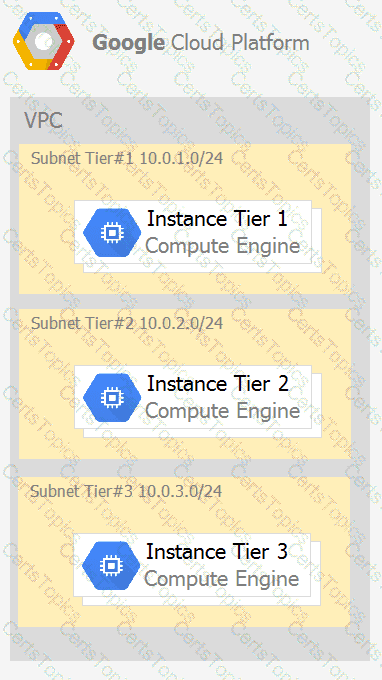You need to enable traffic between multiple groups of Compute Engine instances that are currently running two different GCP projects. Each group of Compute Engine instances is running in its own VPC. What should you do?
Your company has a 3-tier solution running on Compute Engine. The configuration of the current infrastructure is shown below.

Each tier has a service account that is associated with all instances within it. You need to enable communication on TCP port 8080 between tiers as follows:
• Instances in tier #1 must communicate with tier #2.
• Instances in tier #2 must communicate with tier #3.
What should you do?
You are the team lead of a group of 10 developers. You provided each developer with an individual Google Cloud Project that they can use as their personal sandbox to experiment with different Google Cloud solutions. You want to be notified if any of the developers are spending above $500 per month on their sandbox environment. What should you do?
You have a number of applications that have bursty workloads and are heavily dependent on topics to decouple publishing systems from consuming systems. Your company would like to go serverless to enable developers to focus on writing code without worrying about infrastructure. Your solution architect has already identified Cloud Pub/Sub as a suitable alternative for decoupling systems. You have been asked to identify a suitable GCP Serverless service that is easy to use with Cloud Pub/Sub. You want the ability to scale down to zero when there is no traffic in order to minimize costs. You want to follow Google recommended practices. What should you suggest?